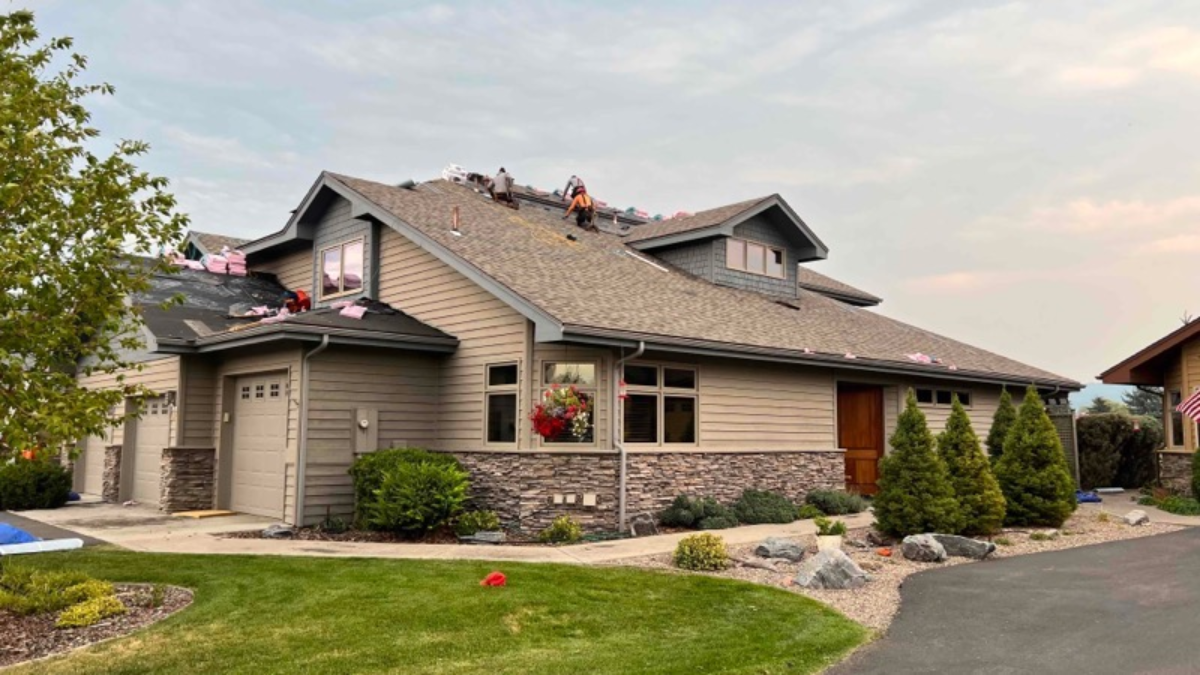Determining the best time to replace a roof is a pivotal decision that can significantly impact the longevity and performance of one’s home. This crucial maintenance task, often overlooked, can protect a home from serious damage and costly repairs in the future. Understanding when to replace a roof, coupled with the best time for roof replacement, plays a key role in maximizing investment and ensuring the structural integrity of the home. Factors such as the best temperature for roof replacement and identifying the warning signs demanding a roof overhaul are fundamental in making an informed decision.
This article endeavors to guide homeowners through the process of recognizing when it’s time to replace a roof and identifying the optimal season for undertaking such a significant home improvement project. It will delve into the signs that indicate a need for roof replacement, discuss the most suitable seasons for roof replacement, and highlight the factors to consider before commencing with this substantial task.
By understanding what is the best time to replace a roof, homeowners can ensure their roof replacement project is as efficient and effective as possible.
Signs that Indicate You Need a New Roof
Age of the Roof
The lifespan of a roof is crucial in determining its replacement time. Most roofs, depending on the material, have a lifespan of 20-30 years. As roofs age, they become more susceptible to damage and leaks. Asphalt shingles, commonly used in many homes, generally last about 22-25 years. If a roof is older than 15 years and starts showing signs of leaking, it might be time to consider a replacement.
Visible Damage
Visible indicators such as missing, curling, or cracked shingles are clear signs that a roof might need replacement. Additionally, if you notice dark streaks caused by algae or moss growth on the roof, it can hold moisture and cause further damage over time. Granule loss from shingles, which appears as dark spots or cracks, also suggests significant wear and might necessitate a roof replacement.
Water Leaks and Mold
Water leaks can lead to significant structural damage inside a home. If there are water stains on walls or ceilings or you find puddles in the attic, these are probable signs of a leaky roof. Mold growth, particularly in hidden areas like between the roof and ceiling, can pose health risks and indicate moisture problems. Mold thrives in moist environments, and its presence often correlates with an ongoing or past water leak, signaling that roof inspection and possible replacement are imminent.
Best Time to Replace a Roof
Each season offers unique advantages for roof replacement, making the choice highly dependent on local climate and roofing needs.
Spring
Spring is often favored for roof replacement due to moderate weather conditions, which make it easier for contractors to work efficiently. This season allows for addressing any damage incurred during the winter and preparing the roof for potential summer storms. Roofing materials adhere well to mild temperatures, ensuring a durable installation.
Summer
Summer presents an ideal time for roofing due to long daylight hours and generally stable weather conditions, which minimize delays. This season is particularly beneficial for quick installations, as higher temperatures facilitate faster sealing of roofing materials. However, in areas prone to extreme summer heat or storms, scheduling the replacement earlier in the season is advisable.
Fall
Fall is widely regarded as the optimal season for roof replacement. Cooler temperatures and reduced humidity create perfect conditions for roofing materials to set and adhere properly. Contractors are also more available after the peak summer season, allowing for more flexible scheduling. Preparing the roof before winter ensures it can withstand harsh weather, potentially extending its lifespan and enhancing energy efficiency.
Each season has its merits, but it consistently stands out as the most advantageous for initiating roof replacement projects.
Factors to Consider Before Replacing a Roof
When planning a roof replacement, several key factors should be considered to ensure the project is successful and cost-effective. Here are the critical areas to focus on:
Budget
Budgeting is crucial when replacing a roof, especially for homes with roofs older than 15 years. Homeowners should prepare for substantial expenses as both materials and labor can be costly. It’s advisable to add an additional 10% to the estimated cost to cover unexpected expenses. Early adjustments to monthly spending can help accommodate the financial impact of roof replacement. Regular inspections are essential to avoid emergency expenses and allow for accurate budgeting.
Roofing Material Options
Choosing the right roofing materials is vital for durability and cost-effectiveness. While asphalt shingles are commonly used due to their affordability, other materials like wood, concrete, and metal or high-end options like slate and copper offer longer lifespans and enhanced durability. Homeowners should consider their climate and the roof’s exposure to elements when selecting materials, as this impacts the overall performance and lifespan of the roof.
Contractor Selection
Selecting the right Roofing Contractor is as crucial as choosing the materials. Homeowners should obtain at least five estimates to compare costs and service offerings. It’s essential not to base the decision solely on price; factors such as contractor’s experience, licensing, insurance, and customer reviews should also be considered. A reputable contractor will ensure quality installation and provide warranties, contributing to the longevity and performance of the roof.
By carefully considering these factors, homeowners can make informed decisions that optimize the effectiveness and cost of their roof replacement projects.
Conclusion
Throughout this Best Time to Replace a Roof article, we have navigated the complexities of identifying the correct timing for a roof replacement, examining the telltale signs of deterioration, and deliberating on the most opportune seasons for carrying out such a crucial maintenance task. Emphasizing the significant consequences that the age of the roof, visible damages, and the presence of water leaks and mold can have on the structural integrity of a home showcases the importance of timely intervention.
Additionally, the exploration of seasonal advantages underlines the necessity of strategic planning in optimizing the roof replacement process, with a focus on ensuring efficiency and effectiveness.
As homeowners consider undertaking this significant home improvement project, the importance of meticulous preparation and informed decision-making cannot be overstated. From thoughtful budgeting to the strategic selection of roofing materials and the careful vetting of contractors, each step is pivotal in enhancing the longevity and performance of the roof and, by extension, the home itself.


